|
For the last few days, I've had the pleasure to film and witness yet another generation of young ballet dancers culminate their training at Manhattan Youth Ballet.
For more information, please visit www.ManhattanYouthBallet.org
0 Comments
Set to 'Toxic' by Britney Spears, filmed in New York City, cello music by Well Strung.
Dancers: Sophia Stephanopoulos, Marcelo Martinez Martinez. Choreo by Brian Norris and Daevid Mendivil. Directed, filmed and edited by Daevid Mendivil.
Recently a couple of my friends asked me for some help revising and editing their resumes. I figured this must be a pretty common thing to be dealing with since at school they really only teach you the very basic way to make a "professional resume", not considering hundreds of applicants are fighting to stand out in order to catch the potential employer's eye, and ultimately take YOUR job opportunity. With that in mind, I decided to make a 'How To Make a Pimpin' Resume' post. I'm not going to say my friends resumes were terrible (well, one of them was). However there was some definite work to be done there. You see, they were going with what a formal, average resume looks like, but who wants to be seen as average? I've mostly freelanced and done work for which my portfolio and samples are what matters most rather than my resume so I never really thought about it too much. After going over the flashing images of good and bad resumes I've come across in my time, I figured a resume is the equivalent of the first impression you make when meeting someone, except you aren't there to guide the situation in your favor. Look at it this way, if you were just about to meet a potential employer in person, how would you like to be seen? Would you want to be average, not stand out and seem just like the rest of the contenders? Or would you like to be memorable? Do you want to come across as happy, serious, formal, playful or just plain dull? Resumes are your introduction to a new potential employer, so basically it has to be as appealing as possible and it should represent you and "sell" you to your employer prior to even making contact. With that in mind, here are the Ten Tips to Make a Pimpin' Professional Resume: 1- Establish how you want to be perceived. This is the first thing to figure out. If you are going to work at a Law Firm you obviously don't want to seem like a fun loving party animal, however, the opposite applies if you are looking for a job as a DJ. 2- Clear the extra info. Include contact information but unless it is job related, leave your personal address, age and details that are just taking up space OUT! To some people you'll seem too young and for others too old, so why not just let them wonder?! 3- Be direct and type in what matters. Under each position you've held, don't enter every lame detail of your duties. Only enter what might matter to your potential employer. Sure, jobs sometimes require us to do meaningless tasks, but you don't need to bore people with the details. 4- Figure out a strong design at a glance. Make the page design attractive as a whole. If you take a look at your resume from a bit of distance, does it catch your eye? or does it get lost in a sea of resumes? 5- Edit, edit, edit. Make sure to have an accessible file that you can lightly edit in order to fit your employer's expectations as best as possible. To them you must seem like a job match made in heaven! 6- Don't be afraid to break rules, follow your gut and show off your skills! Always include all your special qualities in there. Are you a leader? do you make a great team player? Blow your own horn and own it! 7- Have an accessible online version of it. Don't underestimate the power of the internet! Have an online version ready to share by link, should the opportunity to share it present itself. Either that or have it saved in your email so you can blast it at a moments notice! Also, if you have a website, make sure to include it on your printed resume! 8- Safe = Boring Enough said. Put some color in it! and don't be cheap when you print it. 9- Get personal and make sure to include a photo of your sexy self. So you are an accountant, and you think image doesn't matter, WRONG! Make yourself presentable and get some professional good looking pictures of yourself. Just make sure you look the part you are going for. And please don't be too sexy! I know this can be a challenge but please try. 10- Get it out there! the worst thing that can happen is they toss it! Share, share, share! Upload it everywhere, post it everywhere, email it to every semi important person you know. It might just fall into the right hands. I hope these tips help you land your next job, or if anything, help you get the foot in the door and land a few more interviews than your old boring resume was! ;)  I just got back from my first traveling show with the Ballets With a Twist company since I started with them in April, and i have to say it was awesome. It's always great to spend some extra time with the people that you work with and have some fun as well as learn more about them and what everyone is about. Besides doing our "Cocktail Hour" show, we had some extra time to visit Ashland, which is a beautiful artsy town in Oregon of which I knew nothing about. After visiting downtown, we were invited by one of the dancer's family to a BBQ at their place and enjoyed great food and company from some of her neighbors growing up. To read a review about this performance follow this link For the last few weeks my schedule has gotten so crazy I haven't been able to attend ballet class for some time now, New York City Life can get really busy, specially in the summer, between visiting guests, summer activities, non-dance related work, special projects and the occasional hang out, not being able to make it to daily ballet class can be a common occurrence. Although class is a fairly simple event, I think most dancers are aware that class is a special routine that is kind of sacred, and even if it happens daily, class is always full of wonderful moments, that if we are lucky, we get to enjoy on a regular basis for a fair amount of years in our lives. So with this thought, here are the top 10 simple pleasures from ballet class i'm missing the most: The liberating feeling of turning out for the first time of the day, The positive contagious attitude and energy of an awesome teacher The mental challenge of some combinations That gradual feeling of your muscles starting to get warm as barre goes by The relief of an exercise that was very difficult, being over ...and that moment you realize you still have one more side to go The random life stories that the teacher tells, which somehow always help you in dance or in life That refreshing feeling when you get a quick sip of water in the thirty seconds between barre and center The determination to get a step that you struggled with first time around And the relief and joy of having achieved it in at least a decent manner. After class, having already completed your favorite part of the day although you have a whole other type of challenges heading your way. Oh yeah! and of course, that feeling that even when you can't do anymore, if you were given the option, you would take another class literally right after it, just because its so much fun.
So there I was, my 5th time working with a company and so, I arrived confident that learning the show in five days wouldn't be any problem. I was relaxed and ready to just learn a new ballet. However, there was a twist. Most of the choreography wasn't ballet. It wasn't contemporary ballet either. It wasn't even jazz. This choreo was a different type of movement. It had been described as contemporary to me before flying out to do the show, but that definition did not match the one in my head which was 'ballet steps/lines danced in a less classical style, to modern music'. It was more of a casual movement, more like hip hop-ish movement that might be easily related to commercial work rather than ballet, or ballet based styles, stuff i'd never really done. And while the steps were simple enough I had a real struggle finding myself in it. I'd never really considered myself one, but honestly this made me feel like the biggest Trina in the whole world (as in ballet-rina for those unfamiliar with the term). It was a language I'd never used, and to add difficulty, the counts/steps basically never repeated. I was out of town, with a contract to fulfill and nothing to to about it but get my head together and get the job done... and five days to learn, get used to and have the choreo right before show time, as we were going into the theater right on Monday. Not gonna lie, while learning it, I felt like my head was going to explode, I had a constant feeling of head strain and the fact that it was completely unexpected wasn't helping. Half of the time i didn't even understand why I was doing those steps. It felt like someone was asking me to memorize a speech in Chinese or some foreign unknown language, and fast! Flashing through my head, all the times my friends invited me to hip hop class, as well as all the times teachers told me to try different contemporary classes. All these thoughts where actually getting even more in the way of me learning the stuff. When I felt like I might just give up, the wise words of my 'jazz Sensei' to 'get myself together and do what I'm expected and supposed to do' popped into my head, and pushed me to go forward. I really like working with this company and although most their choreo is more ballet based, I figured being that it is a contemporary company after all, sometimes there simply would be stuff like this and i simply had to step out of my comfort zone and do what I had to do. 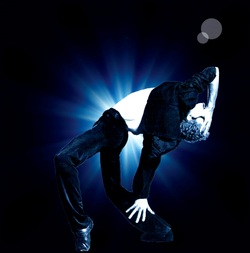 Stephen Harding Stephen Harding What saved me from being completely unable to handle this situation, was the training I got from my 'Sensei', Stephen Harding (www.stephenhardingjazz.com) His class, besides kicking my butt and getting me in the best shape ever, helped me to learn how to learn other styles and ideas outside of the 'ballet box'. He teaches a different (fairly long), stylistically different, choreo every class, which forces you to use your brain and develop your choreography learning skills. All of this while working on (pretty advanced) technique, pirouettes and jumps. Although Stephen's class is definitely a ballet based contemporary jazz style it always had added style challenges and details that definitely help you develop your information intake rate. I always knew his class was helping me remember choreography in ballet faster and I definitely had enjoyed that benefit. But Jazz class taught me to learn choreography that isn't ballet as well, and although the choreo for the show wasn't jazz really either, at least I had a chance at getting the job done, where before my studies with Stephen Harding, I probably wouldn't have been able to manage. In class, if the movement was really challenging, SH would push me to finish and deliver -at least as best as I could, and lucky for me I was able to translate this into my real life experience outside of the classroom, and not just drop the towel over dancing something that wasn't classical ballet. Some people get all crazy on audition season, attending every single company audition that gets posted like its a mission to attend them all, but when auditioning takes money and time (and let's not forget time is money), is this really the best way to get through auditions season? Let's make something clear to begin with, the fact that people have to pay an audition fee for work consideration, is already messed up enough. Talk to some non-dancers for a change, and ask them what they would think if they needed to attend a job interview where they would have to pay to be interviewed, and let me know what they answered. Now, if its a school audition it is different, but when a professional company, searching for dancers to employ goes around the country having auditions charging $20-$30 dollars a pop, there is something absolutely fishy happening, specially when you consider in the fact that most likely there isn't even a handful of jobs to be offered to both men and women. And if you are saying its to pay for the costs of the audition, think again, a flight only costs about $300 and renting prime studio for 2 hours is roughly $150 (in Manhattan), say the person conducting the audition is staying overnight, and hired a teacher to give class so he/she could look for work candidates, add $500, we are still under $1000 which is roughly 50 dancers @$20 dollars each. Having said that, (and I'll get back to that on another post), there are many other things you should consider finding out before blindingly going to an open call and paying for the privilege to work your ass off for an hour and a half for someone who you might not even be certain they have a job to offer, so here is a list of Things You Should Research Before Attending an Audition What kind of work they do? Maybe the particular style of dancing isn't work you would be thrilled to be doing. What kind of dancers do they currently have on contract? You should make sure it is work that you respect and you'll be proud to be working with them. Who is in charge? Maybe you already worked or know someone who works with that director. They could possibly save you from working for a crazy. Or you could possibly want to work harder to land a gig with a super cool boss. What Stats do their dancers currently have? Do you fit the look, height, shape and possibly level, of the company? There are a lot of different companies and some like more muscular people, some like tall, some like short. Where do you fit in?
Is the company is actually hiring? Lets face it, most companies are suffering and are mostly downsizing. If you can, find out how many man and female contracts they have available for the next season. If you have a spine, you might even ask them directly when you arrive at the audition, before you pay. "How many male and female full time contracts do you guys have available?"
What kind of pay do they offer? Unless your parents are still supporting you, you might want to find a REAL dance job, and not one of those that pays $50 dollars a week and requires you to work full time (possibly after you had to relocate). So having researched all of the above should save you some time, money and energy, and will allow you to focus on actually landing the jobs that are a good fit for you.
Don't forget, you ALSO get to audition the company, its not just them auditioning you! Some people say your headshot is the first impression you'll make when it comes to an audition, or casting, and this may very well be true. however this doesn't mean you need to spend everything in your piggy bank in order to get the perfect one to take in (specially) for your potential first few jobs! Granted, you should probably not have take a selfie, or a random snapshot where you think you look great (I have seen some people use prom pictures and what not for a headhsot) , but there is no need to pay more than maybe $100-$200 for a great looking shot. That's where the magic of photoshop can come in extremely handy. Considering the following facts...
a) hiring a photographer who has a lot of lighting equipment (which probably needs to be in their personal studio) may run anywhere between $150-$400, b) an outdoor session may be not only out of the question because of the winter, but because they can be more expensive, and its a pain to walk around with everything you and your photographer may need during the shoot, c) you may potentially already be a starving artist, and the job you may get (thanks to your headshot) could possibly not even pay for the cost of your photographer's fees after an entire month of work ...then you might want to consider just finding a photographer with the right eye and some decent retouching skills. As you can see in the example above I show the transitional steps between a 'normal' ok shot and the finished product a beautiful headshot. I took that shot with indoor 'home' lighting and no flash, and worked three different versions with very mild photoshopping that mimic the results of proper (and very expensive) studio lighting. Also for those outdoor headshot lovers, i did an outdoor version. Having an idea of what expensive headshots look like is definitely important, that way trying to achieve the same results is somewhat easier. You can do this by simply googling headshots of famous people, who obviously have access to the best photographers. Another key thing is having good material to start from. So I encourage you today to find yourself a friend who knows how to use photoshop, or an affordable photographer who is willing to photograph and retouch your image for a reasonable price, or even maybe just photoshop a picture you or a friend of yours took for you for a flat fee. D a e v i d M e n d i v i l is a NYC-based multi-disciplinary artist in the visual and performing arts, creating expressive works through dance, music, photography, painting, film & design. www.Daevid.net Living in NYC is pricey, and finding work in dance in the NYC area and staying in good 'ballet shape' in between gigs (at the wonderful price of $17 bucks per open class, which you should be taking at least 5 times a week to be ready to audition for a job) is pretty much impossible on a dancer's salary alone, at least for most people who are on our own and handling all the expenses of living in the big apple. While scholarships are available to some of us, they still usually require you to be there for anywhere between 4-6 hours per day, interfering with any possibility to have a full time job, which you probably need in order to pay for the unforgiving rents, transportation, and $4 coffees. Even for the lucky ones working for ourselves, there are still the questions of having to take class in a 'school environment' that you may not necessarily want to be in anymore, or even taking classes from teachers whose class you don't enjoy which could very well be required to. So, considering the fact that Manhattan is the most expensive city to live in in the US, saving $17 a day may put you in a position where you could consider potentially simply not continuing to dance. In my case, a combination of all those factors, as well as being lucky enough to work on other things that pay better than the few dance gigs available in the city, drove me to the decision to quit dancing. But then after just five months of absolutely no dance, I decided to go back. Which brings me to suggest from my own experience: DO NOT JUST STOP! Before 'quitting for good' or even taking a long break without dance class, you'd better be damn sure you're not planning to come back, or else you may face the awful consequences. After just five months, the padding on the bottom of my feet went flat, my flexibility disappeared, I built muscles that totally got in the way of turning out, and gained ten glorious pounds-- that since I was too out of shape to get through more than two classes a week, although I had been going to the gym and lifting weights consistently-- it seemed like I would never be able to get rid of them. So if you are facing the decision --or the need-- not to take class, I suggest you try to discipline yourself to do a few quick things that would save you from turning into a total mess in no time, and you can do it by doing these 5 Simple Ways to Stay in Dancing Shape While you're on break. Do a barre on your own If you make yourself a simple 'set barre' that incorporates every exercise in plie, flat, and releve, you can stay in pretty decent shape without having to go to a full class. You can get through this in about 15-20 minutes. Stretch You can multi-task while watching tv, doing computer work, or planning out your daily schedule. Keep eating sensibly Dancing burns roughly 500-800 calories per ballet class so you can figure out how much you need to adjust your eating when you aren't taking class. Incorporating jumps in your cardio training Jumps are one of the first things to go when you aren't using them, on 'cardio' days -or daily if possible- make sure to do at least two sets of 'warm up jumps' which should help minimize losing power. If you go to the gym, work out on things that can still help with dance Working out at the gym is mostly designed to 'look good' for -non dancer- standards, but not for being speedy, and flexible or move very fast, so if you follow 'normal' gym workouts, you might not only lose some of you ballet ability, but you can potentially build muscles that make it event harder to get back into the studio and just rely on your muscle memory and natural ability. Doing exercises using turn out, and lengthening may save you from having this issue, as well as help you stay strong. 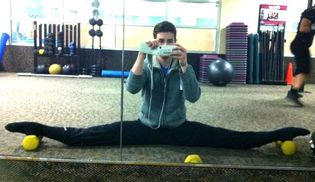 Following these simple steps require less than an hour per day, cost barely anything -since gym memberships are extremely affordable nowadays- and will give you the freedom to get back into class at a moments notice, and allow you to go to an audition to book your next job or scholarship, not to mention it will save you from learning the hard way, like I did! Daevid Mendivil is a NYC based multi-disciplinary artist in the visual and performing arts, creating expressive works through dance, painting, photography, film & design. www.Daevid.net |
www.Daevid.net
Connect w/me: Categories
All
Archives
August 2020
|
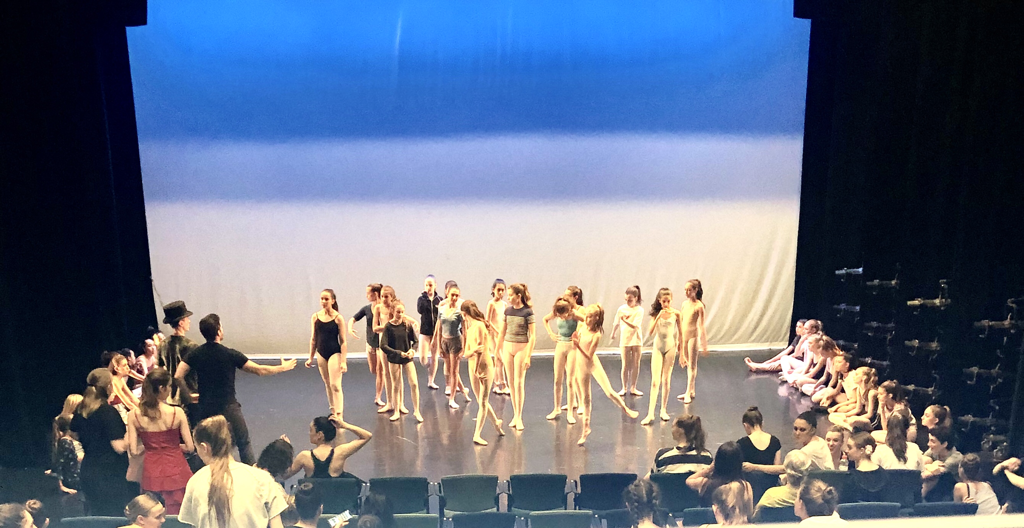
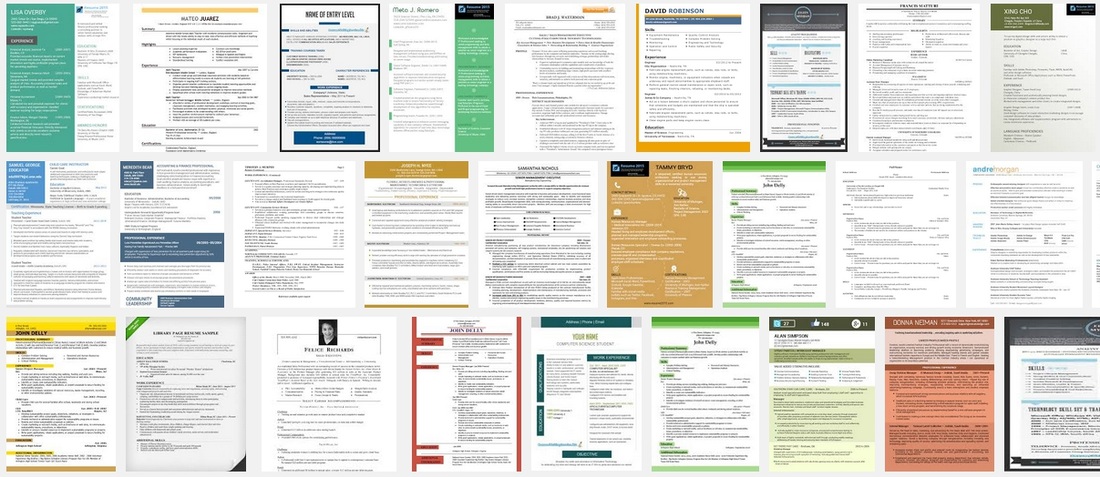
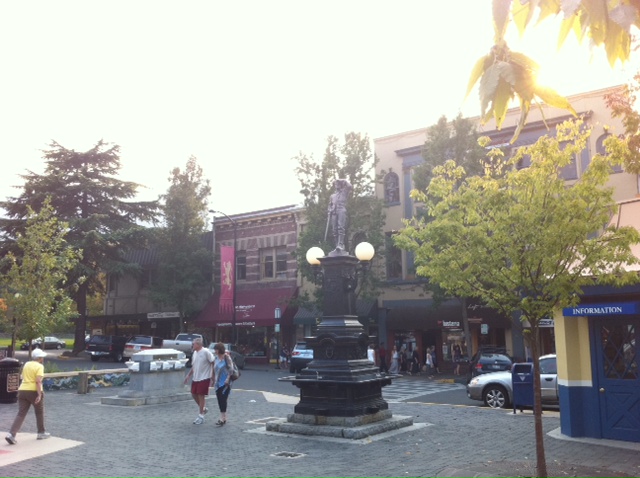
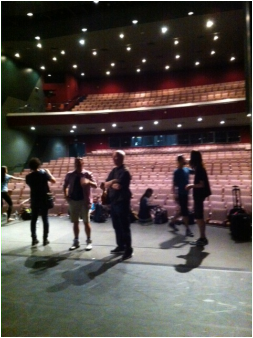
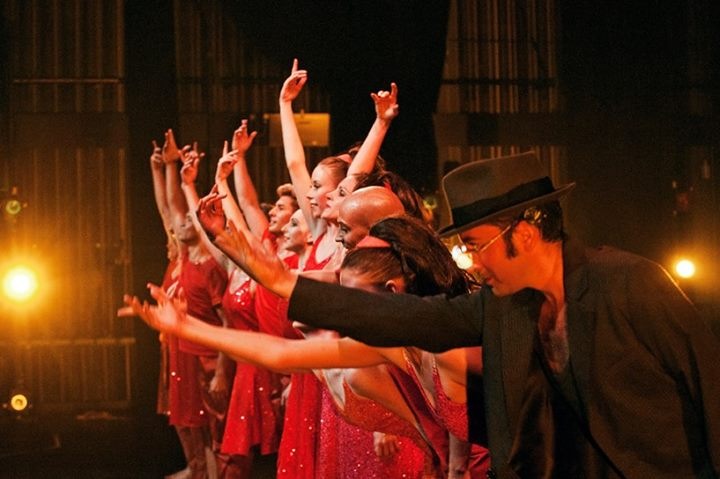
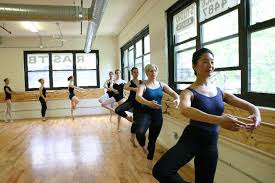

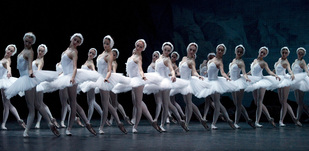
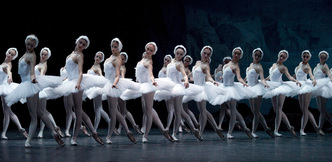
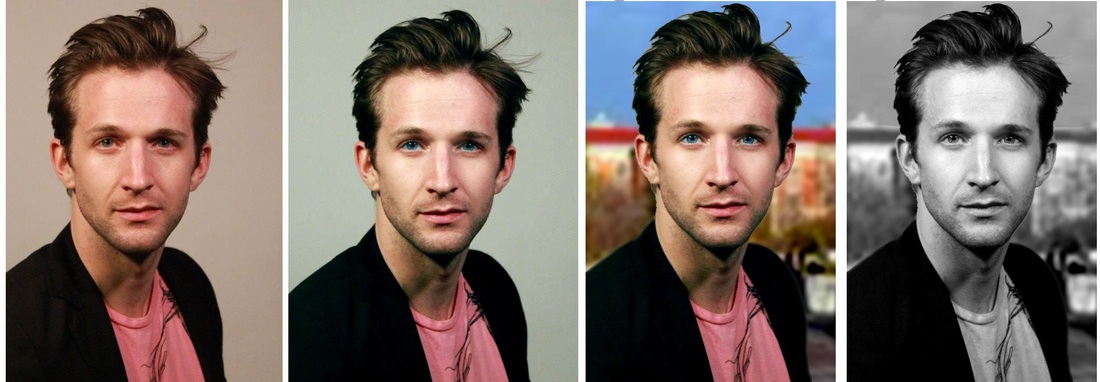



 RSS Feed
RSS Feed